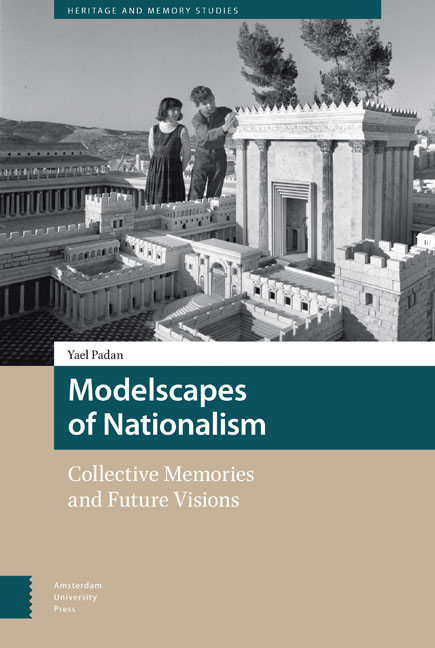Book contents
- Frontmatter
- Dedication
- Contents
- List of Illustrations
- Preface
- Introduction: Narratives into Objects, Objects into Narratives
- 1 The Qualities of Modelscapes
- 2 Models and Modern Perceptions of Nationalism
- 3 The Second Temple Model
- 4 Mini Israel
- 5 The Valley of the Communities
- Conclusions
- Bibliography
- Index
2 - Models and Modern Perceptions of Nationalism
Published online by Cambridge University Press: 12 February 2021
- Frontmatter
- Dedication
- Contents
- List of Illustrations
- Preface
- Introduction: Narratives into Objects, Objects into Narratives
- 1 The Qualities of Modelscapes
- 2 Models and Modern Perceptions of Nationalism
- 3 The Second Temple Model
- 4 Mini Israel
- 5 The Valley of the Communities
- Conclusions
- Bibliography
- Index
Summary
Modelscapes are representational modes which are both an outcome and a reflection of modern modes of perception. This chapter will further explore two interrelated issues within this perceptual context. The first issue is the use of modelscapes in order to represent built environments which do not exist in the present. The ability of modelscapes to represent collective pasts, as well as visions of the future, will be examined and related to the perception of time in secular modernity.
As secularism developed, time was no longer understood as nearing an apocalyptic end, and therefore the perception of time in modernity was separated from religion. The secular view towards the end of the eighteenth century perceived time as a human task, and in this context, the future could be designed by human thought. The idea of living in modernity made it possible to look back on the past, as well as to propose a better, model future, which could improve society through human action. This led to the emergence, towards the end of the eighteenth century, of the term ‘progress’, which characterises modernity.
Modelscapes are thus products of the modern perception of the future as a scope for human action, which encouraged the planning and making of representations of future spaces. The notions of the future as a time of progress and improvement also characterised utopian designs of ideal cities, which were represented as model plans, opposed to and critical of the existing urban situation.
Modern ideas of time and progress are related to the perception of communities and collectives as moving through history, and thus to the development of modern nationalism. Therefore, the second issue explored in this chapter is the role of modelscapes in representing national identity. How do they give tangible form to a community's collective past and shared heritage, and how are they used to represent national territories, within which nationality is imagined? Like the map, they signify the nationalization of a territory, but unlike the map they are places in their own right. In this chapter several examples will be explored, some showing that model representations of national territories may replace a visit to the actual sites represented. Others, such as the World Expositions, show how themes of heritage and national identity represented in modelscapes are used to promote cultural tourism in a globalized economy.
- Type
- Chapter
- Information
- Modelscapes of NationalismCollective Memories and Future Visions, pp. 57 - 74Publisher: Amsterdam University PressPrint publication year: 2017

